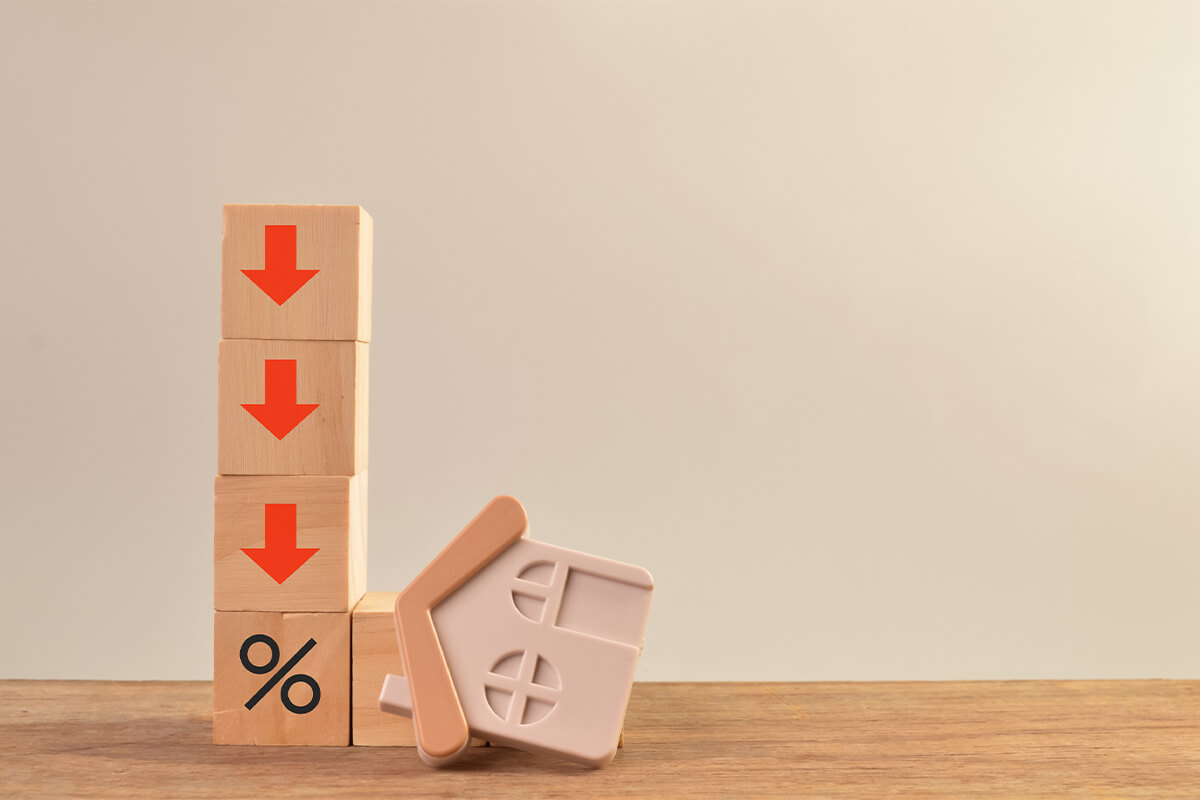Product Return Rate: How to Reduce Product Return Rate in E-Commerce?
Reducing the product return rate in e-commerce is possible with correct product promotion, a smooth logistics process, and a holistic approach that takes customer feedback into account.

Product return rate (Return Rate)Returns is a performance metric that represents the percentage of products returned by customers compared to the total number of products sold in a given time period. For example, if 10 out of every 100 products sold in a month were returned, the return rate for that month is 10%. This ratio provides important information about the quality of products sold, customer expectations, and e-commerce operations.
The Importance of Product Return Rate in E-Commerce

Unlike brick-and-mortar stores, e-commerce customers don't have the opportunity to touch, try, or examine the product closely before purchasing. This naturally leads to higher return rates. The importance of this rate emerges at several critical points:
- Costs: Each return process creates additional costs such as reverse logistics (return cargo), checking the returned product, repackaging it, adding it to stock, and customer service operations.
- Profitability: Increased costs and potentially unsellable (damaged, out-of-season, etc.) products directly reduce profit margins.
- Customer SatisfactionHigh return rates are often an indicator of issues like product quality, inaccurate product descriptions, or damaged deliveries. This leads to customer dissatisfaction and diminished brand loyalty.
- Operational Efficiency: Continuous returns management leads to inefficient use of warehouse and personnel resources.
How is Product Return Rate Calculated?
To calculate the product return rate, simply divide the total number of products returned to you within a specified time period (for example, within a month) by the total number of products you sold during the same period, and multiply the result by 100.
For example, let's say you sell 800 products in a month and 56 of them are returned. In this case, your return rate is calculated as 7%.
Performing this calculation regularly will allow you to see your return trends and understand whether the measures you are taking are working.
How to Reduce Product Return Rate in E-Commerce?
Reducing product return rates in e-commerce isn't a problem that can be solved with a single magic formula. It requires a holistic strategy that focuses on every stage of the customer journey. The key goal is to minimize the gap between customer expectations and the product they receive. The more informed the customer's decision, the less likely they are to return the product. Here are some effective methods you can implement to reduce this rate:
Detail Product Descriptions
One of the most common reasons customers return a product is because it didn't meet their expectations. This is often due to inadequate or misleading product descriptions. Customers can only identify a product they can't physically touch based on the information you provide. Therefore, product descriptions should be more than just sales pitches; they should be an informative tool.
What should be considered for an effective product description?
- Technical Specifications: Specify the product’s dimensions (width, length, height), weight, material (e.g., “100% cotton”, “stainless steel”), color (providing standard references such as Pantone code reduces misunderstandings), capacity and other technical details completely.
- Areas of Use and BenefitsExplain the need the product fulfills, the problems it solves, and the benefits it will provide to the customer. For example, adding a statement like "waterproof fabric protects your belongings in rainy weather" on a bag will clarify the customer's decision.
- Package Included: Clearly list what comes in the box. A description like "Package includes: 1 earbud, 1 charging cable, 3 different sizes of silicone tips" will prevent returns due to missing parts.
- Maintenance and Usage Instructions: Especially for clothing, electronics or products that require special care, adding information such as washing instructions, assembly guides or usage recommendations will prevent the product from being damaged and returned due to improper use.
Remember, a detailed and honest explanation builds trust by removing all doubts in the customer’s mind and significantly reduces returns due to “it didn’t turn out as expected.”
Use High-Quality and Realistic Images

The principle of "what you see is what you get" is fundamental in e-commerce. Because customers can't touch or try on products, they base their purchasing decisions largely on visuals. Inadequate or misleading visuals create a gap between customer expectations and reality, becoming a major cause of returns.
Visual strategies to reduce return rates:
High Resolution and Zoom: Allow customers to clearly see details (fabric texture, stitching quality, material surface, etc.) by hovering over the product. This increases the perception of quality and eliminates ambiguity.
- Photos Taken from Different Angles: Provide photos that show the product from the front, back, side, top, and bottom, not just its best angle. This gives the customer a complete picture of the product.
- Realistic Colors: Don't overdo it when editing product photos. Ensure the colors in the photo reflect the actual product color as accurately as possible. Adjust the white balance settings correctly to minimize any variations that may occur due to monitor differences. If necessary, it may be helpful to support the colors with descriptive terms like "mint green" or "baby blue" in the description.
- Show the Product in Use (Concept Shots): Use "lifestyle" photos that show how an outfit looks on a model, how a piece of furniture looks in a room, or how many items a bag can hold. These types of images help the customer better understand the size and scale of the product. Including the model's body and height measurements further enhances this effect.
- Product Videos and 360 Degree VisualsShort product videos are a great way to show off a product in action, its function, and its use. 360-degree rotating images increase confidence by allowing customers to examine the product from every angle, as if they were actually in person.
Remember, the goal isn't just to sell a product; it's to sell the right product to the right customer. Honest and comprehensive images are one of the most effective ways to achieve this goal.
Highlight Customer Reviews and Comments
Customers trust the real experiences of other customers more than what a brand says about its own products. This "social proof" phenomenon is one of the most powerful tools available for reducing return rates. Reviews help potential buyers make more informed decisions, reducing expectation discrepancies.
How can you use customer reviews effectively?
- Provide Realistic Information FlowCustomers often provide valuable information about details you might not fully convey in your product descriptions, such as the fit, color matching the photo, and fabric texture. For example, a comment like, "The fit was larger than I expected, so you might want to go a size smaller," can prevent dozens of returns.
- Build TrustA page with only perfect 5-star reviews can be suspicious. A mix of positive and negative reviews builds trust by demonstrating transparency and valuing feedback. Professional responses to constructive criticism demonstrate your brand's customer focus.
- Encourage Questions and AnswersCreate a section on your product page where customers can ask questions, and you or other customers can answer them. This interactive area clears up ambiguity and creates an organic repository of answers to frequently asked questions.
- Allow Visual Comments: Allow customers to add photos or videos of themselves wearing their purchases to their reviews. These visuals, which show how an outfit looks on different body types or how a decor item looks in a real home, are invaluable to potential buyers.
- Reward Detailed CommentsEncourage your customers to leave reviews. Instead of asking a general question like, "How did you find the product?", you can get more helpful feedback by asking specific questions like, "Did the product fit perfectly?" or "Was the color as pictured?" Offering small discounts on future purchases to those who leave reviews can encourage this process.
Customer reviews are your best and most honest sales representatives. By making them visible, you can both increase your sales and naturally reduce your return rates.
Provide Size and Measurement Guides on Product Detail Pages

In e-commerce, especially in the fashion industry, the biggest cause of returns is incorrect sizing. The key to minimizing returns due to "the size doesn't fit" is to provide customers with the clearest and most accurate sizing guide possible.
What should an effective size and measurement guide be like?
- Ürüne Özel Rehberler OluşturunFits can vary from brand to brand, even from different products within the same brand. Instead of a general "S-M-L" chart, provide a guide specifically designed for each product, including measurements specific to that product's fit. Adding notes like "This product is slim; we recommend choosing one size larger than your actual size" is extremely helpful.
- Show Me How to MeasureSimply providing a measurement chart isn't enough. Include clear illustrations or short videos showing the customer where and how to measure their chest, waist, and hips. This will ensure the customer takes their own measurements accurately.
- Share the Model's DimensionsInclude the model’s height, weight, and size in your product photos (e.g., “The model is 5’7”, weighs 140 lbs, and is wearing a size S.”). This creates a strong reference point for customers to visualize how the product will look on them.
- International Size Equivalents: If you sell internationally, include different country standards (e.g., EU, US, UK) in your size chart. This will prevent confusion for your global customers.
- Interactive Body Finding ToolsLeverage technology. Smart "Find My Size" apps, which suggest the most suitable size based on customer information like height, weight, age, and body type, improve the user experience and significantly increase the likelihood of choosing the right size.
A comprehensive and understandable size guide increases customer confidence, eliminates hesitations during purchasing and, most importantly, largely eliminates returns due to "not fitting" reasons.
Establish Transparent and Clear Return Policies to Increase Trust
While it may seem counterintuitive at first, offering a simple and straightforward return policy can reduce return rates in the long run. Customers feel more confident about their purchase when they know they can easily return a product if they encounter a problem. This confidence eliminates the "what if" anxiety and encourages more informed, less impulsive purchases.
A difficult and complicated return process, however, has the opposite effect. It can deter customers from purchasing or, even in the slightest hesitation, drive them to return the product immediately to avoid the hassle.
What should a transparent and customer-friendly return policy be like?
- Must be easily accessibleYour return policy shouldn't be a hidden link at the bottom of your site. It should be easily visible and accessible on product pages, the help center, and checkout steps.
- Simple and understandable language should be usedInstead of using complicated, legalese, use clear, simple, and friendly language that everyone can understand. List the terms and conditions clearly.
Clarify All Details:
- Return Period: How many days does the customer have to return the product? (Ex: 14 days, 30 days)
- Return Conditions: Specify the conditions under which the product can be returned (e.g. unused, with tags on, in original packaging).
- Shipping Fees: Clarify who will cover the cost of return shipping. Offering “free returns” is one of the most powerful policies for increasing customer satisfaction and conversion rates.
- Refund Process: Write clearly how soon and by what method (credit card, money transfer, etc.) the refund will be made after the product reaches you.
- Simplify the ProcessLet customers easily submit a return request online in just a few steps. Automatically generating a return code and instructing the shipping company to return the product with it simplifies the process considerably.
A clear and honest return policy communicates to customers that "We stand behind our product and value your satisfaction." This environment of trust fosters brand loyalty and prevents unnecessary returns.
Package the products in high-quality and durable packaging.

A customer's first physical contact with their order is the package they receive. Poor or inadequate packaging directly increases return rates by causing two main problems: product damage and a negative first impression.
Packaging strategies to prevent returns:
- Preventing Damage Is the Primary GoalA product damaged in transit is an unavoidable reason for a return. Such returns result in the company bearing both the cost of the product and the round-trip shipping costs.
- Correct Box SizeChoose boxes that are small enough that the product won't move around unattended, but large enough to leave room for padding to prevent impact.
- Protective Filling Materials: Prevent the product from being shaken or impacted by filling the gaps inside the box with materials such as bubble wrap, air cushions, foam or at least compressed paper.
- Special Protection for Fragile Items: Wrap delicate items such as glass, ceramics, and electronics in multiple layers of protective material and place a “Fragile” label on the box.
- Improve the “Unboxing” ExperiencePackaging is not just about protection; it is also a reflection of your brand identity.
- A carefully folded piece of wrapping paper, a personalized sticker, or a small thank you card will instantly create a positive feeling in the customer towards your brand.
- This positive first impression can make customers find minor product flaws more tolerable and influence their decision to return. A messy, sloppy package, however, has the opposite effect, increasing their willingness to return even for minor issues.
- Take Precautions Against Weather ConditionsUse water-resistant outer packaging, such as shipping bags, to prevent rain or moisture from affecting the boxes of products such as textiles or electronic devices.
Strong and careful packaging completely eliminates returns made with the excuse of “my product was damaged in shipping” and makes the customer’s first encounter with your brand unforgettable.
Offer Safe Shipping Options
The ordering process isn't complete until the product reaches the customer without any issues. The shipping company you work with acts as an extension of your brand, and their performance directly impacts your brand perception. An unreliable shipping process can create issues like delays, lost packages, and poor customer service, increasing return rates.
What should be taken into consideration for correct cargo management?
- Work with Reliable and Fast CompaniesChoose not just the cheapest option, but also a courier company with a proven track record, adherence to delivery times, and high customer satisfaction. A delayed or lost shipment, no matter how good the product, ruins the customer experience and leads to cancellations and returns.
- Offer Cargo Tracking: Provide customers with a clear and easy-to-understand tracking number and link so they can track every step of their order. Knowing where their order is reduces customer anxiety and reduces support requests like "where's my package?"
- Offering Flexible Delivery OptionsOffer your customers various delivery options when possible. In addition to standard shipping, options like "next day delivery," "delivery within a specific timeframe," or "pickup from a shipping branch/drop-off point" allow customers to find the solution that best suits their schedule and reduce the number of packages returned due to unavailability.
- Monitor Delivery PerformanceClosely monitor customer complaints about the shipping companies you work with. If you experience persistent issues with a particular company, consider working with alternative companies, prioritizing customer satisfaction.
Remember, the final, eagerly awaited step of the order is delivery. Any disruption at this stage can overshadow the entire positive shopping experience and lead the customer to return the product.
Provide opportunities for pre-testing or trialing products
A major challenge in e-commerce is the customer's inability to physically touch, try, or test the product. Technologies and services that bridge this gap can significantly reduce return rates by alleviating doubts like "Will it fit me?" or "How will it look in my home?"
Some of the methods that can be applied are:
- Virtual Try-On with Augmented Reality (AR): This technology allows customers to virtually view products in their own environment or on themselves.
- Furniture and DecorationCustomers can use their phone's camera to see how a chair or painting they are considering purchasing would look in their living room, in real size.
- Glasses and Accessories: Customers can virtually try on how a pair of glasses or a hat looks on their own face.
- Makeup ProductsThey can test how different lipstick or eyeshadow colors look on their own skin tone. This significantly prevents returns, especially due to color mismatches.
- “Try Before You Buy” Models: This model, which has become particularly popular in the fashion industry, involves sending a few items to the customer. The customer tries on the items in the comfort of their own home, retains the ones they like, and pays for them only. They can easily return any they don't like. This makes the returns process a natural part of the sales process and virtually eliminates returns due to incorrect sizing. While logistically more complex, it's highly effective in terms of customer loyalty and satisfaction.
- Physical Store Integration (Omnichannel)If you have a physical store, integrate your online and offline channels. Let customers try on a product they like online at your nearest store with the "Try in Store" option. This combines the convenience of online shopping with the security of a physical try-on.
Such opportunities enable the customer to make a more informed and confident purchasing decision, thus preventing returns based on expectation discrepancies.
Give a Gift in the Product Package and Special Discounts on Your Next Purchase
Sometimes, it's the emotional connection a customer has with your brand, rather than the product itself, that influences a return decision. Adding small surprises to your order package is one of the most effective ways to strengthen this bond and create a positive perception in the customer's mind. This gesture creates a psychological effect known as the "principle of reciprocity."
How can you implement this strategy?
- Small and Meaningful GiftsInclude a low-cost but thoughtful gift, whether related to the customer's purchase or not. This could be a branded sticker, a product sample, a bag of candy, or even a heartfelt handwritten thank-you note. This unexpected gesture makes the customer feel valued.
- Create a Positive Unboxing ExperienceA surprise gift or discount coupon transforms the unboxing experience from a mundane activity into an exciting moment. This positive experience can help customers become more tolerant and accept the situation rather than initiate a return process, even if they experience minor dissatisfaction with the product.
- Encourage Future SalesOffering a discount coupon or gift certificate valid for the next purchase offers a double benefit. It increases customer satisfaction with the current purchase and encourages future returns. This is a wise investment that increases customer lifetime value.
When a customer feels valued and appreciated by the brand, they're less likely to bother returning a product for minor issues. This method puts an emotional and positive damper on the rational decision to return the product.
Provide Live Support and Fast Customer Feedback
A customer's question, if left unanswered, can easily lead to a return request. Prompt and effective communication can eliminate these questions as soon as they arise, preventing many returns.
How to establish an effective communication strategy?
- Pre-Purchase Live Support (Live Chat)While browsing a product page, customers may be unsure about size, specifications, or availability. Having a live support channel where they can get immediate answers can help guide them toward choosing the right product. This breaks the "I bought it because I wasn't sure, and if it doesn't work, I'll return it" mentality and encourages an informed purchase.
- Instant Post-Purchase AssistanceAfter receiving the product, a customer may encounter installation, usage, or maintenance issues. If they can't find a quick solution, the easiest solution is to return the product. A quick email response, a WhatsApp support line, or instant support via social media can prevent returns due to simple usage issues.
- Instant Response to Refund RequestWhen a customer initiates a return request, view the process as an opportunity. Once you learn the reason for the return (for example, "I couldn't install it" or "the product didn't meet my expectations"), you can immediately contact a support specialist and offer to resolve the issue. Perhaps the issue is simply a misunderstanding that can be easily resolved. This proactive approach can result in a refund and a satisfied customer.
A fast, solution-oriented customer service department not only resolves existing issues but also acts as a line of defense, preventing potential returns before they even occur.
Make Improvements by Analyzing Feedback
All the methods we've listed so far are tools for reducing return rates. However, the most effective way to utilize these tools and achieve lasting improvement is to view return reasons as a data source. Every return provides valuable feedback that reveals a weakness in your business.
How can you establish this feedback loop?
- Systematically Collect Return Reasons: When creating a return request, ask your customers to select a reason from a standard list. This list should be clear and specific:
- Wrong size / Did not fit
- The product is damaged / defective
- The product does not look like the one in the photo (Color/Model difference)
- Did not meet my expectations (Quality/Material)
- Wrong product sent
- I don't need it anymore
- Also, add a comment box for more detailed information.
- Analyze Data Regularly: This data you collect is specific
Report and analyze periodically (for example, monthly or quarterly). In this analysis, seek answers to the following questions: - Which products are returned the most? There may be a chronic problem with a particular product. Perhaps there's a manufacturing defect, or the product description is misleading.
- What is the most common reason for return? If you're constantly receiving "wrong size" returns, it's clear that you need to review your sizing charts and product descriptions. If you're experiencing a high number of "damaged in shipping" returns, you should question your packaging method or shipping carrier.
- Which products have complaints about "color being different from the photo"? It's time to take photos of those products again.
- Take Action and Improve: Analysis alone is meaningless. The important thing is to take concrete steps based on this data.
- “Close fitAdd a note to the description of a pair of trousers that receives a comment like “It is a slim fit, it is recommended to buy one size larger.”
- For a ceramic vase that constantly gets damaged, switch to double-wrapping.
For a product that is difficult to install, include a clearer manual in the box or an assembly video on the website.
Analyzing returns data shifts your focus from reactively resolving issues to proactively preventing them. This continuous improvement cycle not only reduces your return rates but also maximizes your product quality, customer service, and overall brand reputation.
Conclusion
Product returns are an inevitable reality in e-commerce. However, a high return rate isn't fate; it's a symptom of operational and strategic issues that need to be addressed. Efforts to reduce the return rate go beyond simply reducing costs; it's a journey toward building a more transparent and trustworthy brand centered on customer satisfaction.
As we have discussed in this process, the solution lies not in a single magic touch, but in a holistic approach:
- Managing Expectations Properly: Make your product pages "information hubs" with detailed descriptions, realistic studio-quality images, sizing guides, and, most importantly, honest reviews from other customers. The more clearly a customer knows what they're buying, the less likely they are to be disappointed.
- Providing Trust and PeaceOffer your customers a transparent, easily accessible return policy, robust packaging, and a reliable shipping process. When customers feel your brand stands behind them every step of the way, they'll become more loyal and less likely to turn minor issues into returns.
- Enriching the Experience: Elements such as virtual try-on opportunities with augmented reality, small gestures added to the package, and an instantly accessible live support line transform shopping from a mundane transaction into a personal and positive experience.
Ultimately, your most powerful strategy is to listen to feedback and take action. View each return not as a costly expense, but as a free consultation that tells you how to improve your products, marketing, and processes. By systematically analyzing return reasons and implementing concrete improvements, you'll not only reduce your return rates but also achieve happier customers, a stronger brand reputation, and sustainable e-commerce success.
FAQ
What is the most common reason for product returns in e-commerce and how can I prevent it?
The most common reasons for returns are "choosing the wrong size" (especially for clothing) and "the product didn't meet expectations" (the product looked different than in the photo, the quality was lower than expected, etc.). The most effective way to prevent this is to provide detailed size guides on your product detail pages that include product-specific measurements, use high-resolution photos and videos taken from all angles that accurately reflect the product's color and texture, and prominently display customer reviews.
Wouldn't streamlining my return policy increase the number of returns even more?
While it may seem so at first glance, it has the opposite effect. A transparent, simple, and customer-friendly return policy eliminates the pre-purchase anxiety of "what if it doesn't work?", boosting customer confidence. Customers make more informed purchases when they know they can easily return a product in the event of a problem. Difficult and complicated processes, on the other hand, can deter customers from the outset or force them to return even a minor issue "just to avoid the hassle." A simple return policy strengthens brand loyalty.
I'm on a tight budget. What are the most cost-effective and effective ways to reduce my return rate?
Low-cost methods that provide the highest return on investment (ROI) include:
Enriching Product Descriptions: Adding all the details like materials, dimensions, care instructions to your existing descriptions is virtually cost-free.
Encouraging Customer Reviews: Sending an automatic email to your customers after their purchase, asking them to leave reviews, and highlighting reviews is very effective.
Improve Photos: Even if you can't set up a professional studio, taking clear photos of the product from different angles with your phone in good lighting is much better than just using supplier images.
How can I find out exactly why my customers are returning products?
The best way to do this is to collect data during your returns process. When a customer submits a return request, ask them "What is your reason for return?" and provide them with a predefined list of options (e.g., Wrong Size, Damaged Item, Color Different, etc.). By regularly analyzing this data, you can identify which products are returned most frequently and for what reasons, and take action to address the root cause (e.g., updating the size chart).
What is a "normal" or "good" return rate for my industry?
A “good” return rate varies greatly by industry. As a general rule:
Clothing and Shoes: Has the highest return rate due to size mismatches (usually 20%-30%).
Electronics: Has a lower rate (usually 5%-10%).
Household and Kitchen Goods: Generally below 10%.
Health and Beauty: It has one of the lowest rates due to hygiene.
Instead of getting hung up on the numbers, the main goal should be to constantly monitor your own ratio and focus on steadily reducing it through the improvements you make.
-
 worgoo
worgoo
